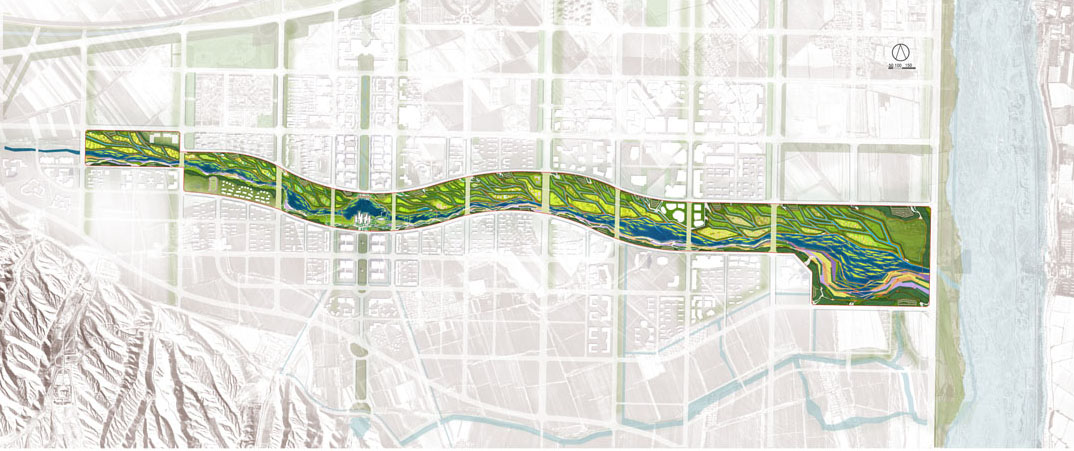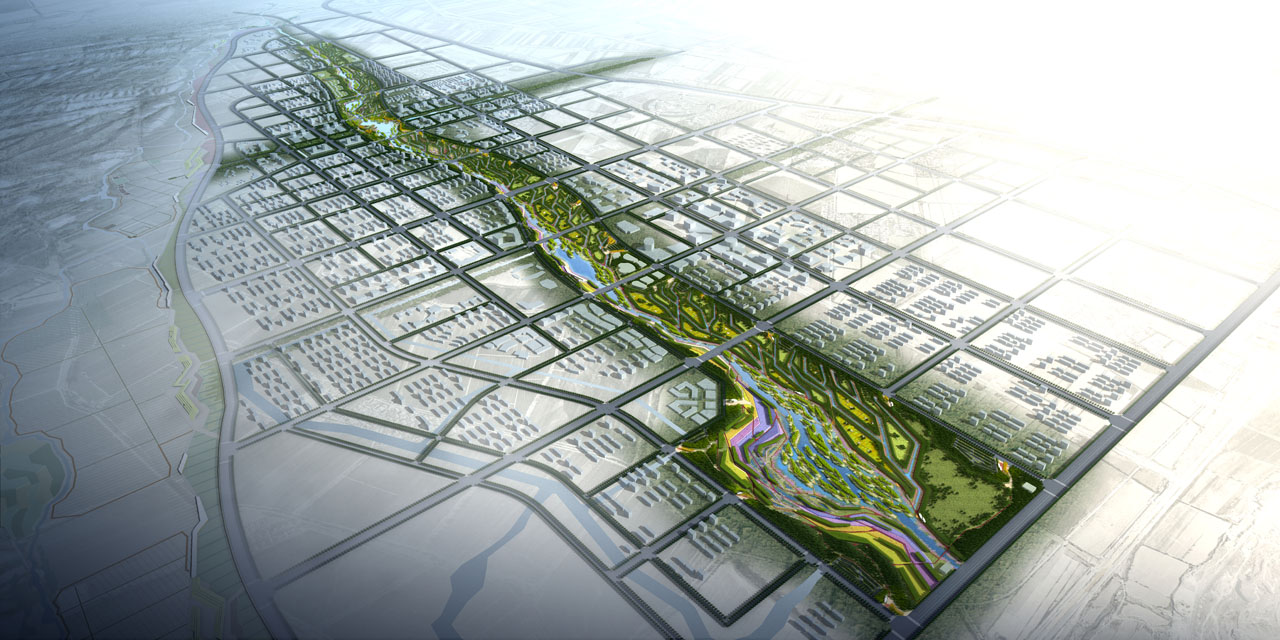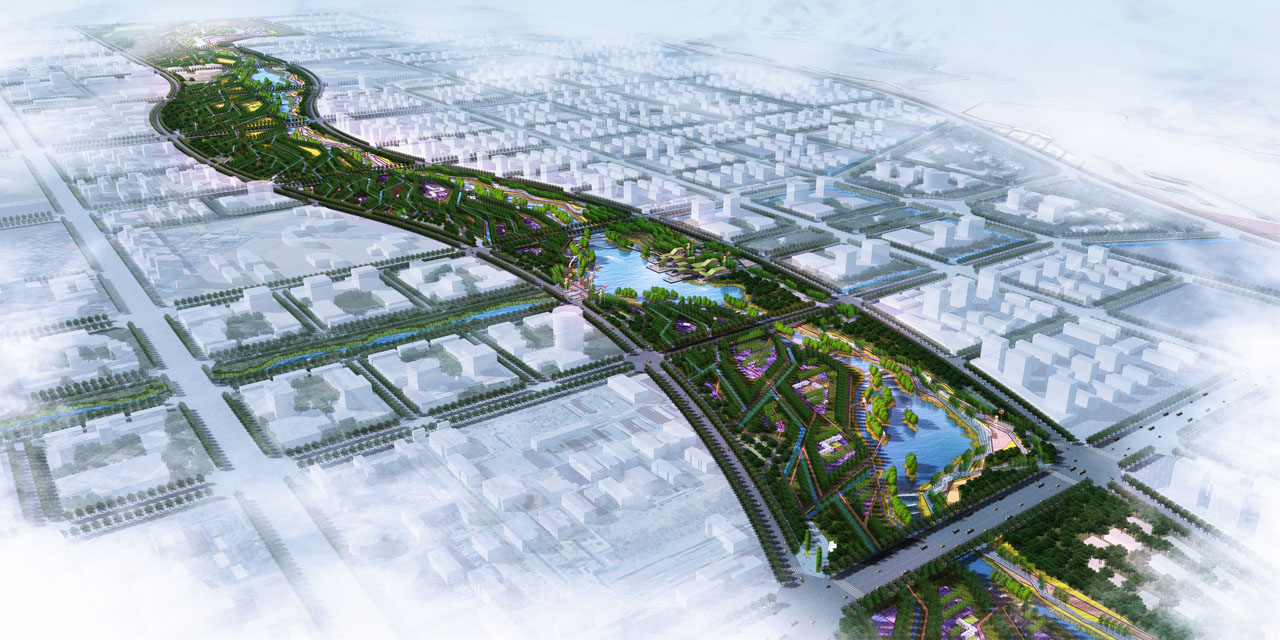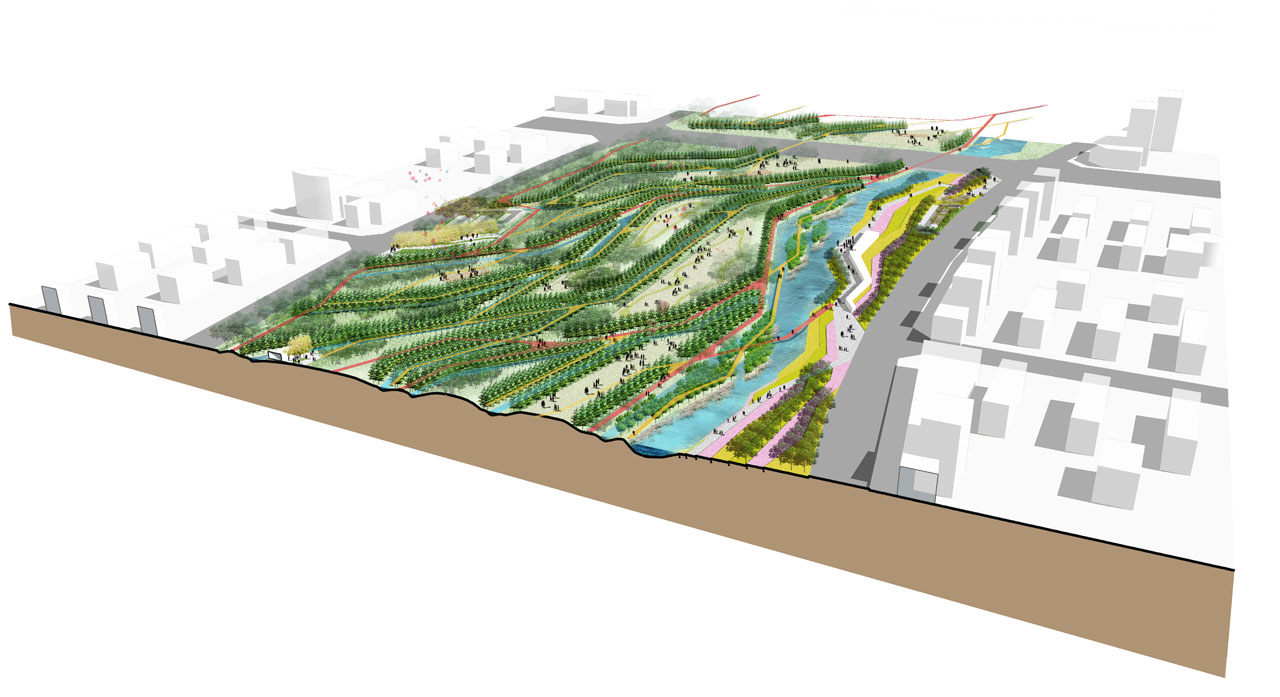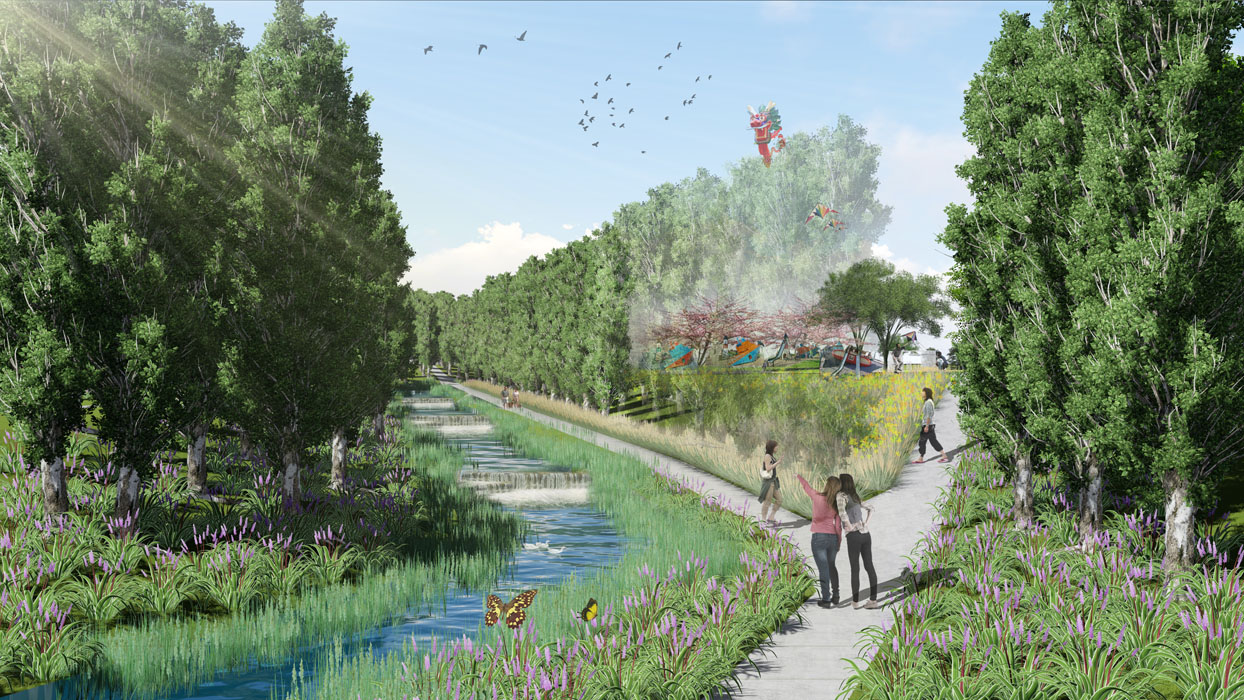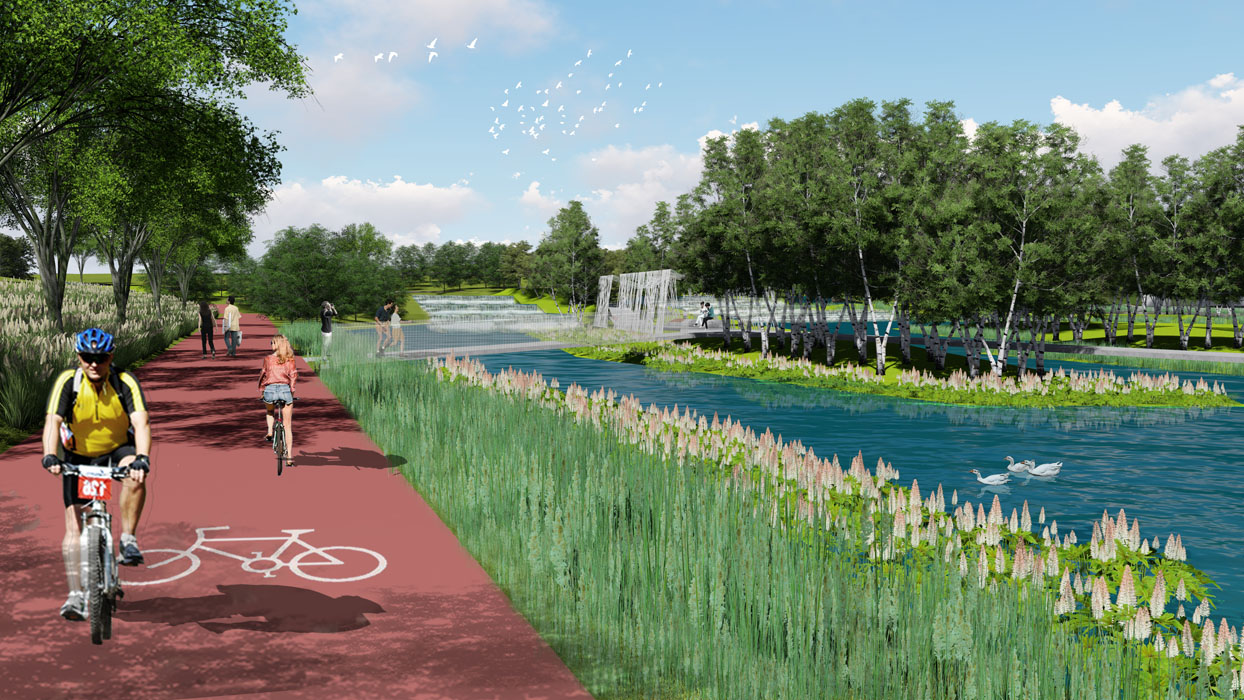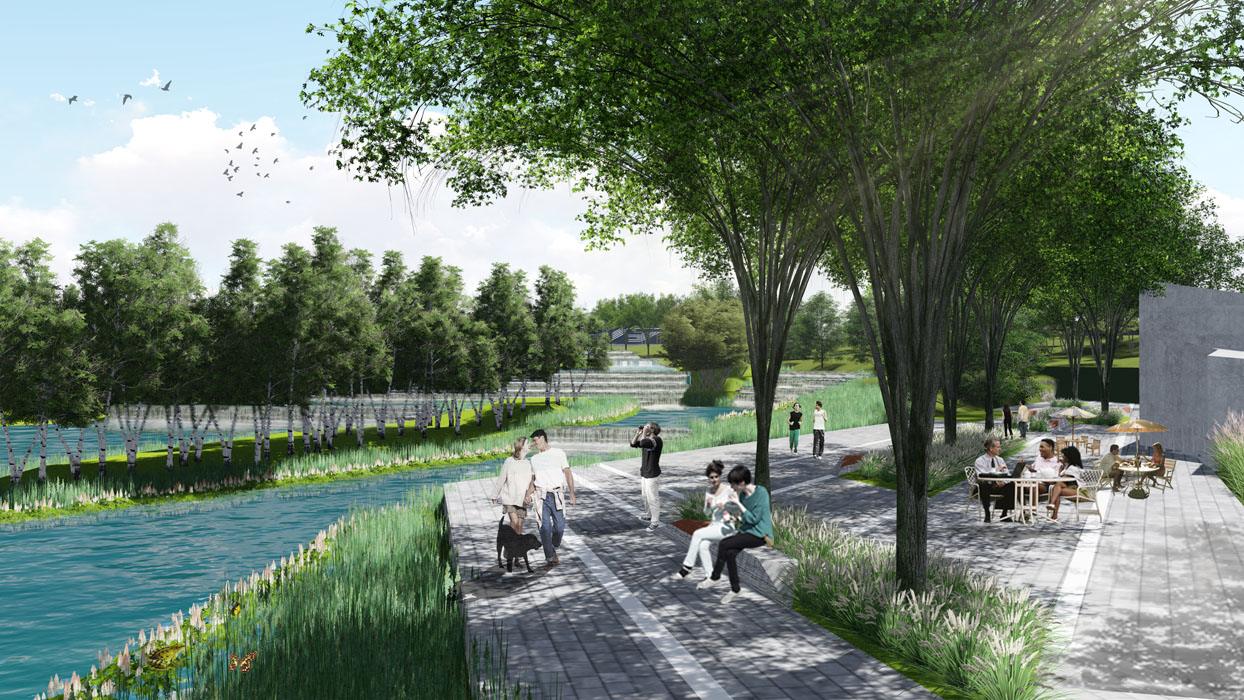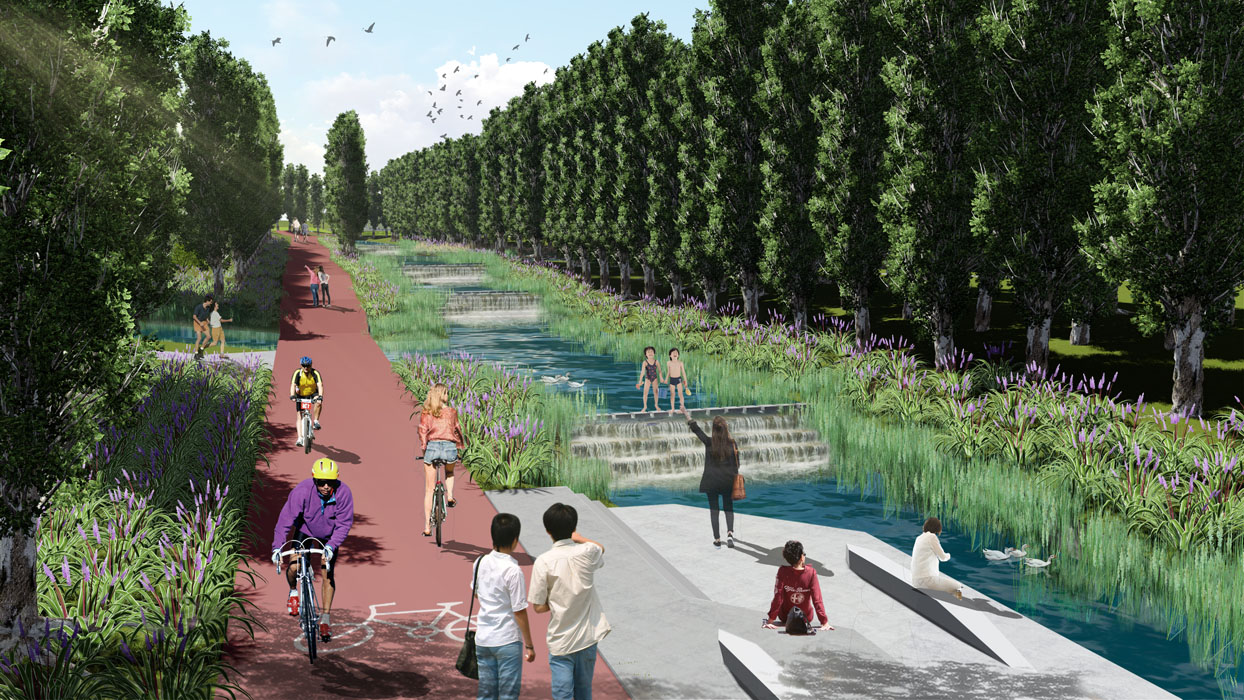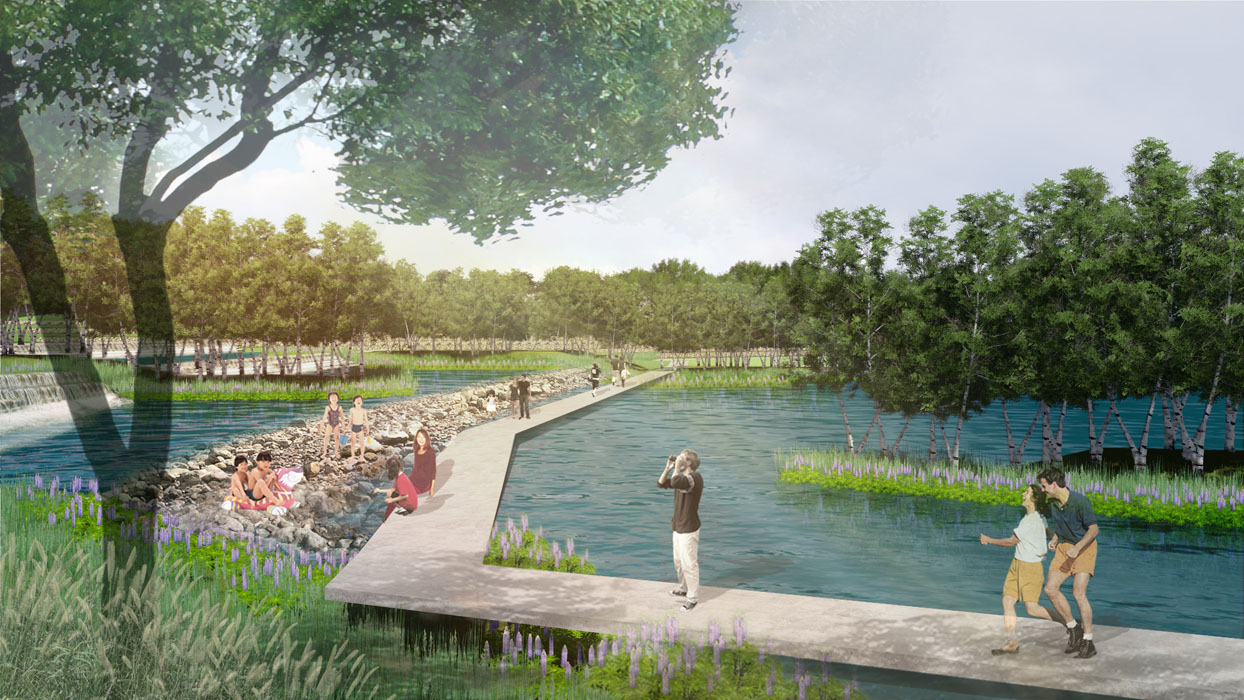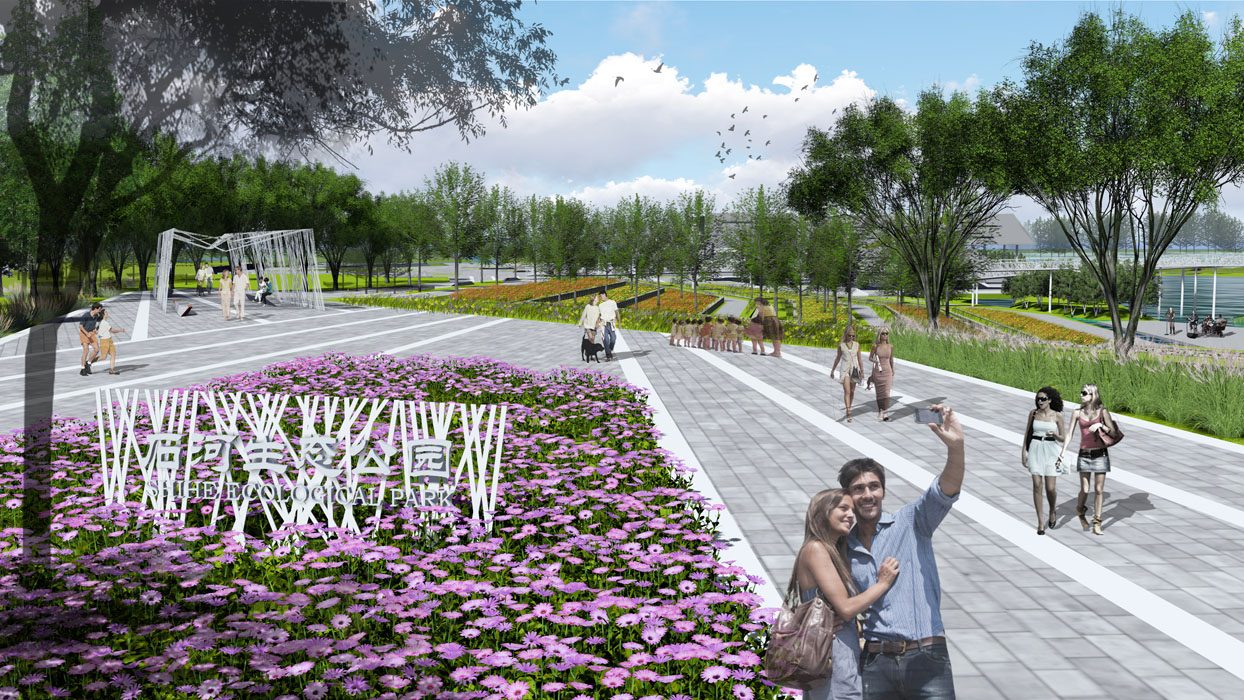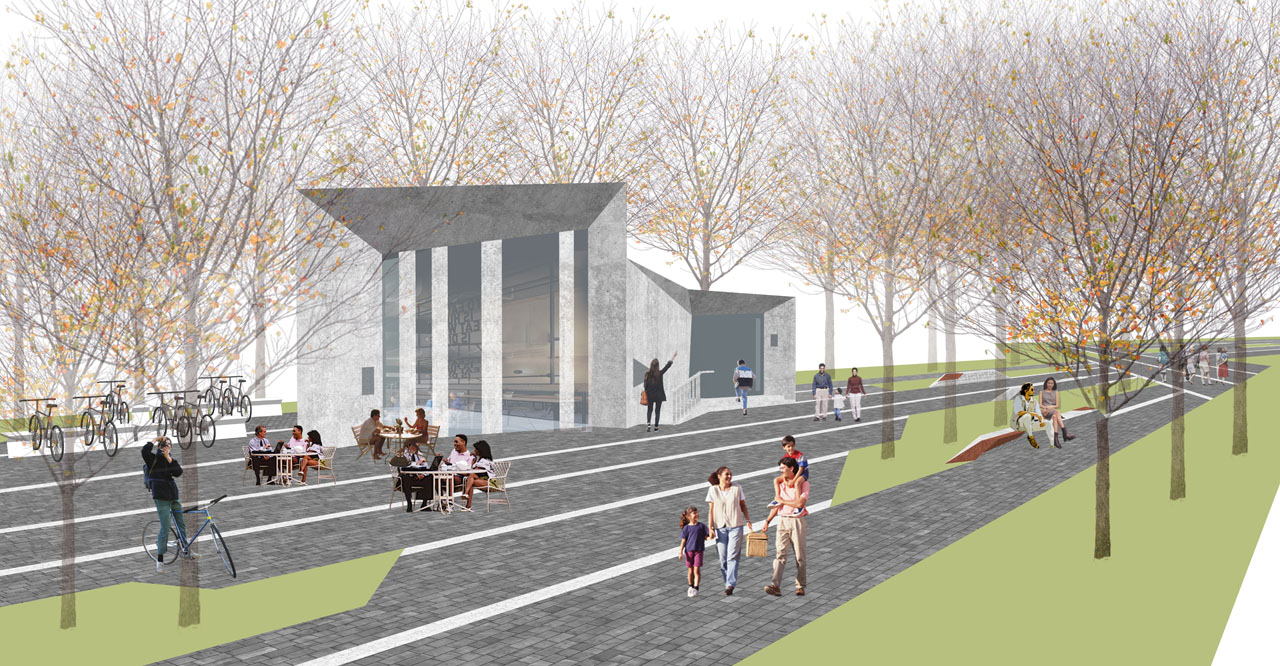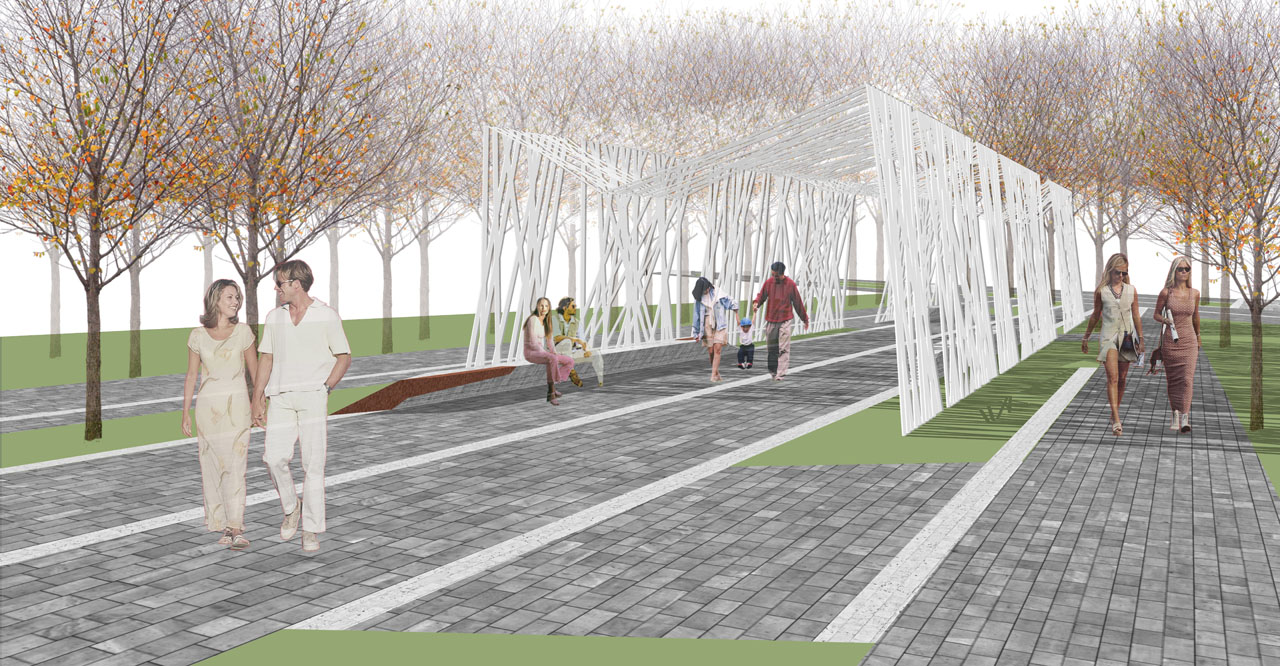Xinjiang Shihezi Shihe Ecological River Channel
Project Information
- Project Location:
- China Shihezi, Xinjiang
- Project Scale:
- 492.1 Hectares
- Design Time:
- February 2017
Project Profile
1. Project Statement
Known as the "Famed City of Agricultural Reclamation" and "Pearl of the Gobi," Shihezi is a modern city that emerged from frontier reclamation with the goal of ecological livability. The project site is located in the Nanshan New District, an area currently dominated by farmland that is set to transform into a new city characterized by high-tech industries. The Shihe River will be converted from two existing main irrigation channels by removing the rigid concrete structures, with the new river channel and surrounding green space becoming the central public space and ecological corridor for the new city.
2. Objective and Challenge
Shihezi is located on the northern slope of the Tianshan Mountains, where the climate is arid with minimal rainfall throughout the year. Agricultural irrigation relies on melting snow from the Tianshan Mountains, transported to the farmland through irrigation channels. This method of irrigation has shaped Shihezi's unique channel system urban landscape. The current Shihe River consists of two main irrigation channels, which serve the irrigation needs of half the farmland in the Nanshan New District (water volume of 3.97m³/s) and provide water for farmland downstream in Shawan County (water volume of 10m³/s). The data shows that most of the water used by the Shihe River is transitory, with very limited water available for local use. Additionally, non-point source pollution from current agricultural practices has severely affected the water quality of the downstream reservoirs fed by irrigation channel runoff. The main challenge for the Shihe River ecological transformation is how to use limited water resources to create and maintain the river corridor while controlling water quality to alleviate downstream pollution. Furthermore, urbanization brings challenges such as industrial transition, the disappearance of farmland, and population growth. How to preserve the memory of Shihezi's agricultural reclamation civilization and leverage waterfront advantages to create distinctive public open spaces is a design challenge.
The Shihe River landscape corridor will become an important ecological corridor and a waterfront public open space for citizens to relax, enjoy, and connect with nature, serving as a new symbol of ecological civilization to support urban development.
3. Design Strategy
To address water issues, the project proposes a "Water Conservancy Irrigation + Landscape" strategy, aiming to achieve functional water landscapes. By summarizing the traditional wisdom of Shihezi's agricultural reclamation water conservancy, the project expresses this through landscape design. The site's existing topography is higher in the southeast and lower in the northwest, so the main river channel is set in the northern part of the site. Root-like ecological irrigation channels cover the entire site, allowing water to flow from east to west due to gravity, irrigating the green spaces and supporting plant growth. The design extracts the compositional elements of the "channel system city" landscape, using tree belts to protect the ecological irrigation channels, improve the local microclimate, reduce evaporation, conserve soil and water, and strengthen the water system's texture. The combination of water and greenery forms an ecological foundation of root-like water transportation and flourishing branches and leaves.
Once the water volume is satisfied, controlling water quality becomes the next goal. The project proposes a "Water Ecology + Landscape" strategy, integrating ecological water treatment with water landscapes to restore the ecological function of the river channel. The straight water conveyance channel is transformed into a naturally meandering river, using root-like ecological irrigation channels to create varied boundaries that provide habitats for flora and fauna, enhancing the self-purification capacity of the water body. In the long term, after urban development, treated wastewater from sewage treatment plants can be introduced into the Shihe River's purification wetland nodes. This ecological water treatment technology will replenish the river and provide an ecological education venue, enhancing its social education function.
By comparing with other existing and planned parks, the project summarizes the brand characteristics of Shihe River, emphasizing ecological leisure experiences with a focus on waterfront leisure activities and showcasing Shihezi's agricultural reclamation water conservancy culture. A comprehensive recreational system is constructed, optimizing the visitor experience through spatial layout, activity installations, and new technologies, telling a story of reconnecting with the harmonious coexistence of humans and nature along the water.
4. Conclusion
These design strategies revive the monotonous and arid land, with the ecological river and root-like irrigation channels functioning like veins delivering vital resources to every part of the land. The resulting ecological green corridor becomes the solid foundation for urban development, supporting the city's future prosperity. This is the origin of the concept "Strong Roots, Flourishing Branches," following natural laws and ancient wisdom, with minimal intervention to solve major problems and create an ideal environment.

